Eric Laithwaite, Emeritus Professor of Heavy Electrical Engineering at Imperial
College, London, died on November 27, 1997 aged 76. He was born on June 14, 1921.
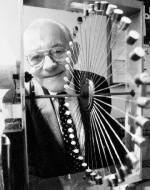
At the age of 76, at a time when many emeritus professors have long since hung up their gowns, Eric Laithwaite was happily working, like a schoolboy with a Meccano set, on the biggest project of his life - a huge working model of a futuristic rocket launcher.
America's National Aeronautics and Space Administration had commissioned him to develop a
concept worthy of Ian Fleming's Dr No - a five-mile long track to be tunnelled up the
inside of a 10,000 ft mountain, hurtling a space capsule along the track and out through
the summit into Earth orbit. The power was to come not from conventional rockets but from
the love of Laithwaite's life - linear motors.
Ever since 1947 Laithwaite had been known as 'The father of the linear
motor'; however, as he constantly pointed out, he did not invent it, he simply
rediscovered it.
'The linear motor is no more than an ordinary electric motor spread
out, but it can create a magnetic river capable of providing friction-free travel',
he told 1950s television audiences.
Within a few years he had designed the world's first magnetically levitating high-speed
train; and such was the force of his personality that he managed to persuade the
Government of the day to back it with £5 million. A mile of track was built and a
full-scale levitating locomotive tested. It was one of the last great all-British postwar
investments in high-tech engineering, but it was abandoned.
'He was devastated',
observed the Science Museum historian Brian Bowers, 'but it did not dampen his
inventiveness.'
For Laithwaite it was a crossroads. Having pinned his future on magnetic levitation, in
his early fifties, he had to turn to other things. He threw himself into writing learned
books on the linear motor and popular ones on invention; he renewed his childhood passion
for butterflies (at his death he had one of the country's largest private collections of
specimens); he became a familiar figure on radio and television, where his engaging
enthusiasm rapidly made him Britain's best-known engineer of the day.
It was his fame, however, that was to lead indirectly to his downfall, in the eyes of
many of his colleagues. As Britain's first media engineer, he attracted the interest of a
small army of amateur inventors. Many popular scientists are profoundly irritated by this
sort of attention, often binning what they regard as 'crank' letters.
But not Laithwaite. One letter, in particular, caught his eye: in it an amateur
inventor described a wheeled device which apparently contravened Newton's Third Law of
Motion - It moved without any power to the wheels or any thrust. Intrigued, Laithwaite
invited the inventor, Alex Jones, to Imperial College. The device Jones brought was
powered by a simple gyroscope and it moved forward on Laithwaite's bench with ease.
'Alex showed me something I could not explain, so I just had to investigate it. It
was sheer curiosity, like Alice following the White Rabbit', Laithwaite was to say
later. He spent the next few years immersing himself in the specialised world of
gyroscopes, gradually convincing himself that they did break known scientific laws, and
that they might be a hitherto unrecognised source of preternatural power. So, when he was
invited to give the Faraday Lecture at the Royal Institution, he knew exactly what to show his august audience.
He brought with him an array of gyroscopes - from toy ones that balanced on model
Eiffel towers, to a huge 50lb one that he spun up and raised effortlessly above his head
with one hand. 'Look', he exclaimed to the assembled dignitaries, 'It's
lost weight!'
Ignoring their evident shock at such a heretical claim, he pressed on
to his final demonstration - two spinning gyroscopes mounted on kitchen scales, which he
claimed had also lost weight.
'I thought my fellow scientists would be genuinely interested, so I wasn't
prepared for the utter hostility of their reaction', Laithwaite recalled later. For
the first time in its history, the Royal Institution failed to publish the Faraday Lecture that year. Laithwaite's nomination for the Fellowship of the Royal Society was cancelled.
He retired from Imperial College in 1981 pretty much in disgrace.
But he never lost his fascination for gyroscopes. 'None of my critics could ever
explain to me how a 50lb spinning wheel loses weight', he said. He teamed up with
Bill Dawson, a fellow electrical engineer and businessman, and spent the last years of his life experimenting with a variety of complex gyroscopic rigs, finally proving to his
satisfaction that they could produce 'Mass Transfer' - a brand new thrust-less
propulsion system. In 1993 he applied for a patent on a gyroscopic space-drive; typically,he had built the demonstration model out of his childhood Meccano set.
In September 1996, however, two Nasa scientists arrived at his Sussex University
laboratory, and his life went full circle. They were looking for a new way of getting
spacecraft into earth orbit, thought of linear motors, and headed straight for the world
expert.
'I showed them all the magic of magnetic levitation', said Laithwaite
happily, 'and they gave me the contract.'
He was working on Maglifter when he
collapsed - and subsequently passed on.
Reprinted from the online version of the London Times
 Visitors =
Visitors =

Thanks to YOU !!!

***Copyright 1997 thru 2006 CN Champe***








 Navigation
Navigation


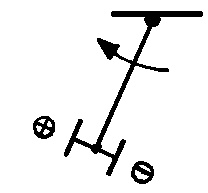
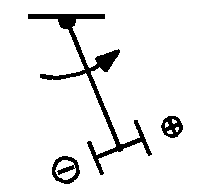
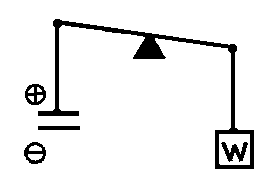
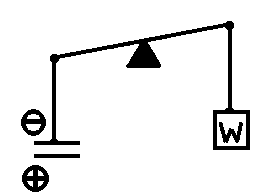

 Navigation
Navigation





